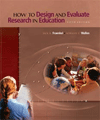 |
1 |  | 
Experimental research differs from other types of research because in experimental research |
|  | A) | the dependent variable must be measured precisely. |
|  | B) | the independent variable must be manipulated. |
|  | C) | groups are compared. |
|  | D) | there are no extraneous variables. |
 |
 |
2 |  | 
A characteristic that distinguishes true experiments from weaker experimental designs is that true experiments include |
|  | A) | assignment. |
|  | B) | matching. |
|  | C) | repeated measurements of the dependent variable. |
|  | D) | random sampling. |
 |
 |
3 |  | 
A researcher would be most likely to use a static group design when |
|  | A) | there is only one new intervention of interest. |
|  | B) | it is difficult to manipulate the independent variable. |
|  | C) | use of a pretest would be a threat to internal validity. |
|  | D) | participants cannot be randomized to conditions. |
 |
 |
4 |  | 
The biggest threat to internal validity when a counterbalanced design is used is |
|  | A) | statistical regression. |
|  | B) | subject characteristics. |
|  | C) | multiple-treatment interference. |
|  | D) | testing. |
 |
 |
5 |  | 
A researcher who chooses to control an extraneous variable by building it into the design would most likely use a |
|  | A) | randomized Solomon four-group design. |
|  | B) | factorial design. |
|  | C) | counterbalanced design. |
|  | D) | time-series design. |
 |
 |
6 |  | 
In matching designs, participants in two or more groups are matched using |
|  | A) | an extraneous variable. |
|  | B) | the dependent measure. |
|  | C) | the independent variable. |
|  | D) | the researcher's expertise. |
 |
 |
7 |  | 
Experimental research is the only type of research that enables researchers to make conclusions about |
|  | A) | group differences. |
|  | B) | the change of variables over time. |
|  | C) | relationships among variables. |
|  | D) | cause and effect. |
 |
 |
8 |  | 
The major characteristic of experimental research, which distinguishes it from all other types of research, is that researchers |
|  | A) | spend money and time in their research. |
|  | B) | manipulate the dependent variable. |
|  | C) | manipulate the independent variable. |
|  | D) | there is no major characteristic that distinguishes it from all other types of research. |
 |
 |
9 |  | 
Using the randomized Solomon four-group design, which of the following threats to internal validity is most likely to occur? |
|  | A) | subject characteristics |
|  | B) | testing |
|  | C) | implementation |
|  | D) | maturation |
 |
 |
10 |  | 
Using the static-group comparison design, which of the following threats to internal validity is most likely to occur? |
|  | A) | history |
|  | B) | maturation |
|  | C) | instrument decay |
|  | D) | subject characteristics |
 |
 |
11 |  | 
Using the matching-only pre-posttest control group design, which of the following threats to internal validity is most likely to occur? |
|  | A) | testing |
|  | B) | maturation |
|  | C) | history |
|  | D) | location |
 |
 |
12 |  | 
Using the counterbalanced design, which of the following threats to internal validity is most likely to occur? |
|  | A) | implementation |
|  | B) | history |
|  | C) | subject characteristics |
|  | D) | testing |
 |
 |
13 |  | 
Using the time-series design, which of the following threats to internal validity is least likely to occur? |
|  | A) | subject characteristics |
|  | B) | testing |
|  | C) | history |
|  | D) | attitudinal |
 |
 |
14 |  | 
Using the one-group pre-posttest design, which of the following threats to internal validity can't be determined? |
|  | A) | attitudinal |
|  | B) | mortality |
|  | C) | history |
|  | D) | data collector bias |
 |
 |
15 |  | 
Using the factorial without randomization design, which of the following threats to internal validity is least likely to occur? |
|  | A) | subject characteristics |
|  | B) | attitudinal |
|  | C) | data collector bias |
|  | D) | instrument decay |
 |



 2003 McGraw-Hill Higher Education
2003 McGraw-Hill Higher Education